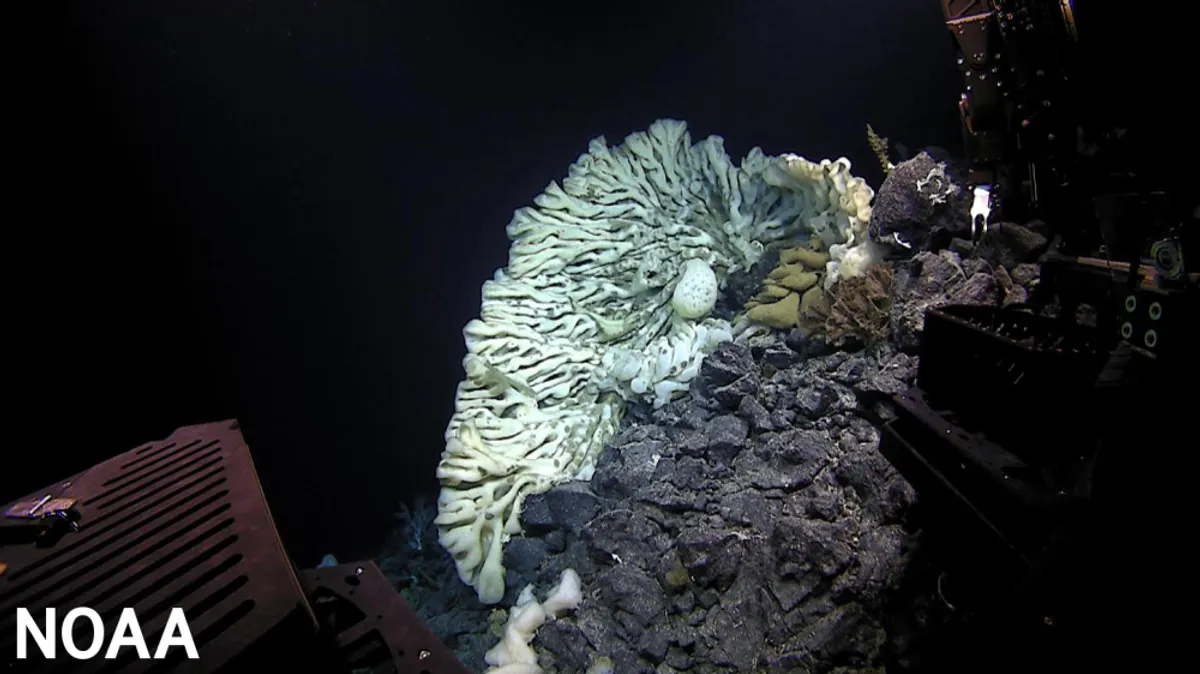The Greenland shark is one of the first to come to mind among long-lived animals. As the longest-lived vertebrates in the world, they evolve incredibly slowly in their cold home in the Arctic. But when it comes to the longest living animals on Earth, these sharks are not alone.
The ocean quahogu is a fairly ordinary-looking oyster that reaches around 5 centimeters in size, and it can take more than 200 years to reach that size. The oldest on record was 507 years old, surpassing the Greenland shark, making it the oldest known non-colonial animal.
It may sound surprising that there are animals that live for more than 500 years, but they do exist. Now, let’s take a look at other long-lived animals on our Earth…
A sponge the size of a minivan

In 2015, scientists discovered the largest sponge ever recorded at 2,133 meters below the sea surface near the Papahānaumokuākea Marine National Monument, off Hawaii. These gigantic colonial organisms are slow growing, meaning they have to be very old to reach enormous sizes. This record-breaking sponge was 3.7 by 2.1 meters in size, and although its exact age has not been confirmed, the National Oceanic and Atmospheric Administration reports that the sponges can live for more than 2,300 years.
immortal jellyfish
Another tiny organism famous for its devotion to life is the immortal jellyfish Turritopsis dohrnii, which is slightly smaller than our pinky finger. As their name suggests, this breed’s ability is not to live very long, but simply to refuse to die.

When undead jellyfish are injured or starved, they fall to the bottom of the sea and begin to rot. However, instead of dying in the traditional sense, their cells regroup to form polyps (the earliest life stage of a jellyfish). This makes them “biologically immortal,” but they do not live forever as T. dohrnii cannot return when eaten.
Quahog oyster Ming
Ming the Quahog clam has seen a lot in his long life. He lived through the Renaissance, the Industrial Revolution, and the Internet Age. It has witnessed countless wars and bloody revolutions, following the rise and fall of empires. Yet it was a freezer that killed him at the end of his dramatic 507-year life.

The Quahog oyster Ming, Arctica Islandica, died only after it was frozen for collection by researchers. It’s not an unusual cause of death for these oysters that are routinely caught and killed for commercial consumption, but it does raise interesting questions about how many more years the Ming could have been passively observed if it hadn’t been touched.
greenland shark
When talking about the longest living animals in the world, it’s best not to mention the ~400-year-old Greenland shark, Somniosus microcephalus. Interestingly, we have to thank the atomic bomb in part for our knowledge of how old they might be. This is because a phenomenon called a “bomb strike” is detectable during radiocarbon dating of eyepieces.
Longevity and small testicles
Generally speaking, living forever can be a big issue in the context of cancer, as the longer an organism stays on this Earth the higher the risk of developing a genetic mutation that can cause disease. Some hardy animals, such as the bowhead whale, have adapted to overcome this and become one of the longest-living species on Earth, but the evolutionary oddity that allows them to do so can have some side effects, including unusually small testicles.
Bowhead whales (Balaena mysticetus) can live up to 211 years old thanks to a unique type of gene duplication that slows cell division, meaning they can age without risk of cancer. However, the CDKN2C gene in question also inhibits male fertility as it causes small gonad size and reduced sperm production.
Seychelles giant tortoise

You may have noticed that there is a marine theme when it comes to the longest-living animals in the world, but this list also includes a terrestrial specimen. The oldest known terrestrial animal is a handsome Seychelles giant tortoise (Aldabrachelys gigantea hololissa) male named Jonathan.
In 2022, he inherited the prestigious World’s Oldest Tortoise crown from Tu’i Malila, a radiated turtle who died in 1965 at the age of 188. At 190 years old, Jonathan is not only the oldest tortoise, but also Guinness World Records’ oldest living land animal, and it’s also stated that his age is a prudent estimate, possibly even older.